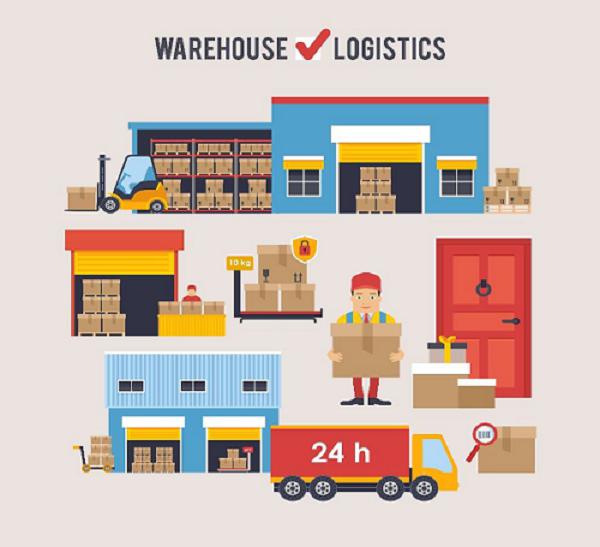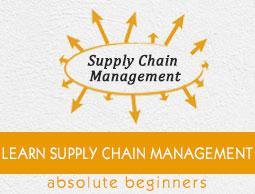SCM - Flow Components
After understanding the basic flows involved in the supply chain management, we need to consider the different elements present in this flow. Thus, the different components of the flow of supply chain are described below.
Transportation
Transportation or shipment is necessary for an uninterrupted and seamless supply. The factors that have an impact on shipment are economic uncertainty and instability, varying fuel prices, customers’ expectations, globalization, improvised technologies, changing transportation industry and labor laws.

The major elements that influence transportation should be considered, as it is completely dependent on these factors for order completion as well as for ensuring that all the flows work properly. The major factors are −
Long-term Decisions
Transportation managers should acknowledge the supply freight flow and accordingly design the network layout. Now, when we say long term decision, we mean that the transportation manager has to select what should be the primary mode of transportation.
The manager has to understand the product flows, volume, frequency, seasonality, physical features of products and special handlings necessities, if any. In addition to this, the manager has to make decisions as to the extent of outsourcing to be done for each and every product. While considering all these factors, he should carefully consider the fact that the networks need not be constant.
For example, in order to transport stock to regional cross dock facilities for sorting, packaging and brokering small loads to individual customers, stock destinations can be assembled through contract transportation providers.
Lane Operation Decisions
These functional decisions stress on daily freight operations. Here, the transportation managers work on real time information on products’ requirements at different system nodes and must collaborate every move of the product that is both inbound and outbound shipping lanes so as to satisfy their services demands at the minimal possible cost.
Managers who make good decisions easily handle information and utilize the opportunities for their own profit and assure that the product is moved to them immediately, whenever it is demanded, that too in the right quantity. At the same time, they are saving cost on transportation also.
For example, a shipment has landed from a supplier who is based in New Jersey and in the same week, a product needs to be dispatched to New York as it becomes available for movement. If the manager is aware of this information in advance, he would prepare everything as per the demand and the products could be shipped out immediately.
Choice and Mode of Carrier
A very important decision to be made is to choose the mode of transportation. With the improvement in the means of transportation, modes of transport that were not available in the traditional transportation modes in the past can be now be a preferred choice.
For example, rail container service may offer a package that is cost-efficient and effective as compared to a motor transport. While making a decision, the manager has to consider the service criteria that need to be met, like the delivery time, date special handling requirements, while also taking into consideration the element of cost, which would be an important factor.
Dock Level Operations
This involves the last level of decision-making. This comprises planning, routing and scheduling. For example, if a carriage is being loaded with different customers’ orders, the function of the dock-level managers is to assure that the driver is informed of the most efficient route and that loads are placed in the order of the planned stops.
Warehousing
Warehousing plays a vital role in the supply chain process. In today’s industry, the demands and expectations of the customers are undergoing a tremendous change. We want everything at our door step – that too with efficient price. We can say that the management of warehousing functions demands a distinct merging of engineering, IT, human resources and supply chain skills.

To neutralize the efficiency of inbound functions, it is ideal to accept materials in an immediately storable conveyance, like a pallet, case or box. For labeling the structure, tool selection and business process demand the types and quantities of orders that are processed. Further, the number of stock-keeping units (SKU’s) in the distribution centers is a crucial consideration.
The Warehouse Management Systems (WMS) leads the products to their storage location where they should be stored. The required functionality for the completion and optimization of receiving, storing and shipping functions is then supplied.
Sourcing and Procurement
Sourcing and procurement are a vital part of the supply chain management. The company decides if it wants to perform all the exercises internally or if it desires to get it done by any other independent firm. This is commonly referred as the make vs buy decision, which we will be discussing in brief in another chapter.
Returns Management
Returns management can be defined as the management that invites the merger of challenges and opportunities for inbound logistics. A cost-effective reverse logistics program links the available supply of returns with the product information and demand for repairable items or re-captured materials. We have three pillars that support returns management processes. These are as follows −
Speed − It is a must to have quick and easy returns management and automate decisions regarding whether to produce return material authorizations (RMAs) and if so, how to process them. Basically, the tools of speed return processing include automated workflows, labels & attachments and user profiles.
Visibility − For improving the visibility and predictability, information needs to be captured initially in the process, ideally prior to delivering the return to the receiving dock. Most effective and easily implementable approaches for obtaining visibility are web-based portals, carrier integration and bar-coded identifiers.
Control − In case of returns management, synchronizing material movements is a common issue that needs to be handled. The producers need to be very cautious and pay close attention to receipts and reconciliation and update the stakeholders of impending quality issues. In this case, reconciliation activates visibility and control all over the enterprise. The key control points in this process are regulatory compliance, reconciliation and final disposition and quality assurance.
Software solutions can assist in speeding up the returns management by supporting user profiles and workflows that state supply chain partners and processes, by labeling and documentation that tracks the material along with the web-based portals and by exception-based reporting to deliver information for timely reconciliation. These characteristics, when executed with the three pillars mentioned above, support a reliable and predictable returns process to count value across the company.

Post - Sales Service
Now that the ordered shipment is over, what is the next step? The post sales service in supply chain tends to be an increasingly essential factor as businesses offer solution instead of products.
The post sales services comprise selling spare parts, installing upgrades, performing inspection, maintenance and repairs, offering training & education and consulting.
Presently, with the growing demands of the clients, a high volume of after sales service proves to be a profitable business. Here, the services are basically heterogeneous and the value-added services are different from those provided prior to sales service.





